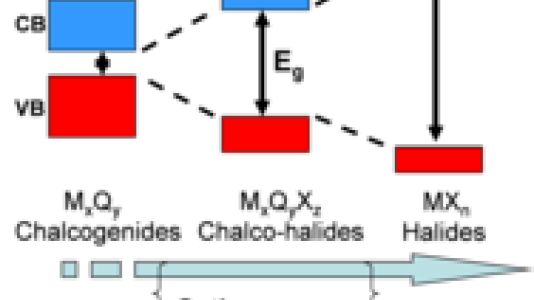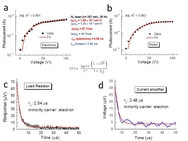
Nuclear detection for the purposes of nonproliferation for homeland security, biomedical, and dental diagnostics as well as other scientific applications requires high sensitivity in order to allow the detection of distant, shielded, or weak nuclear radiation sources.
This project is focused to develop simpler scalable new materials for room temperature operation and high performance γ-ray detection (replace the current leading material Cd1-xZnxTe, CZT). The scientific basis for arriving at new semiconductors is the “lattice hybridization” approach, which is successful in predicting wide band gap (1.6 - 2.8 eV) materials with very high mass densities and high γ-ray absorbing capacity. This approach led to a number of promising chalcohalides and halides for detection of γ-rays. These include the chalcohalides Hg3Q2X2 (Q = S, Se, Te; X = Cl, Br, I) as well as Pb7Q2Br10 (Q = S, Se) on the chalcohalide side; and the halides Pb-based APbX3 (A = Cs, Tl; X = Br, I) and A3Bi2X9 (A = Cs, Tl; X = Br, I). They exhibit reasonably large mobility lifetime (μτ) products of ~10-3 cm2/V with electrical resistivities exceeding 1010 Ω.cm.
The project involves 1) exploration and synthesis of candidate detector materials and 2) purification, crystal growth, optimization of sample process, and characterization.
Crystal Growth of the Perovskite Semiconductor CsPbBr3: A New Material for High-Energy Radiation Detection
CsPbBr3 is a direct band gap semiconductor which meets most of the requirements for successful detection, such as high attenuation, high resistivity, and significant photocon-ductivity response, with resolution comparable to that of commercial, state-of-the art materials. A structural phase transition, which occurs during crystal growth, does not seem to affect its crystal quality. Its μτ product, a property that facilitates charge collection, is approximately equal for both hole and electron carriers, which could make it easy to fabricate a practical room temperature detector.
Related Article
“Fermi arcs in a doped pseudospin-1/2 Heisenberg antiferromagnet”
Y. K. Kim, O. Krupin, J. D. Denlinger, A. Bostwick, E. Rotenberg, Q. Zhao, J. F. Mitchell, J. W. Allen, B. J. Kim
Science 345, 187 (2014)
